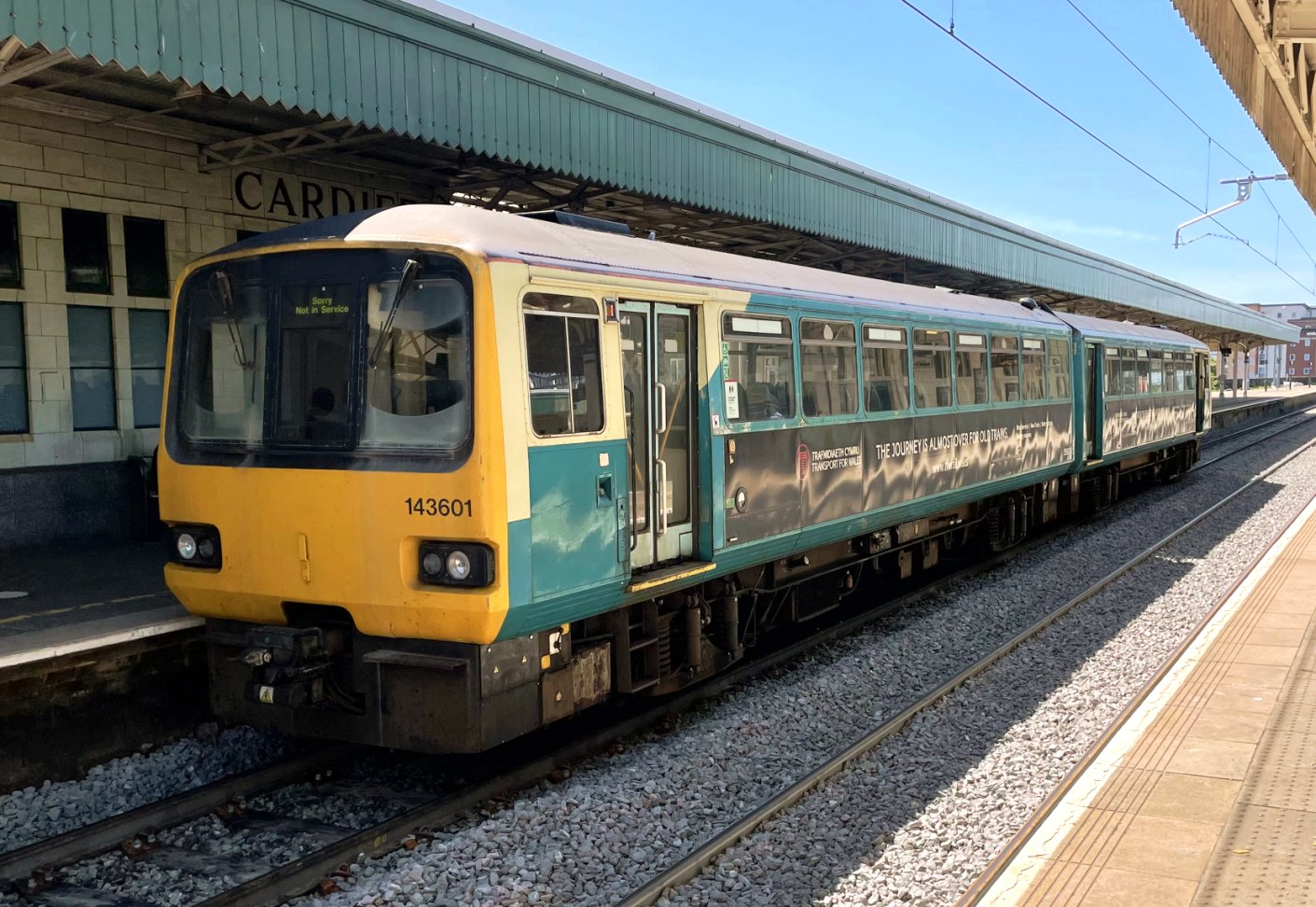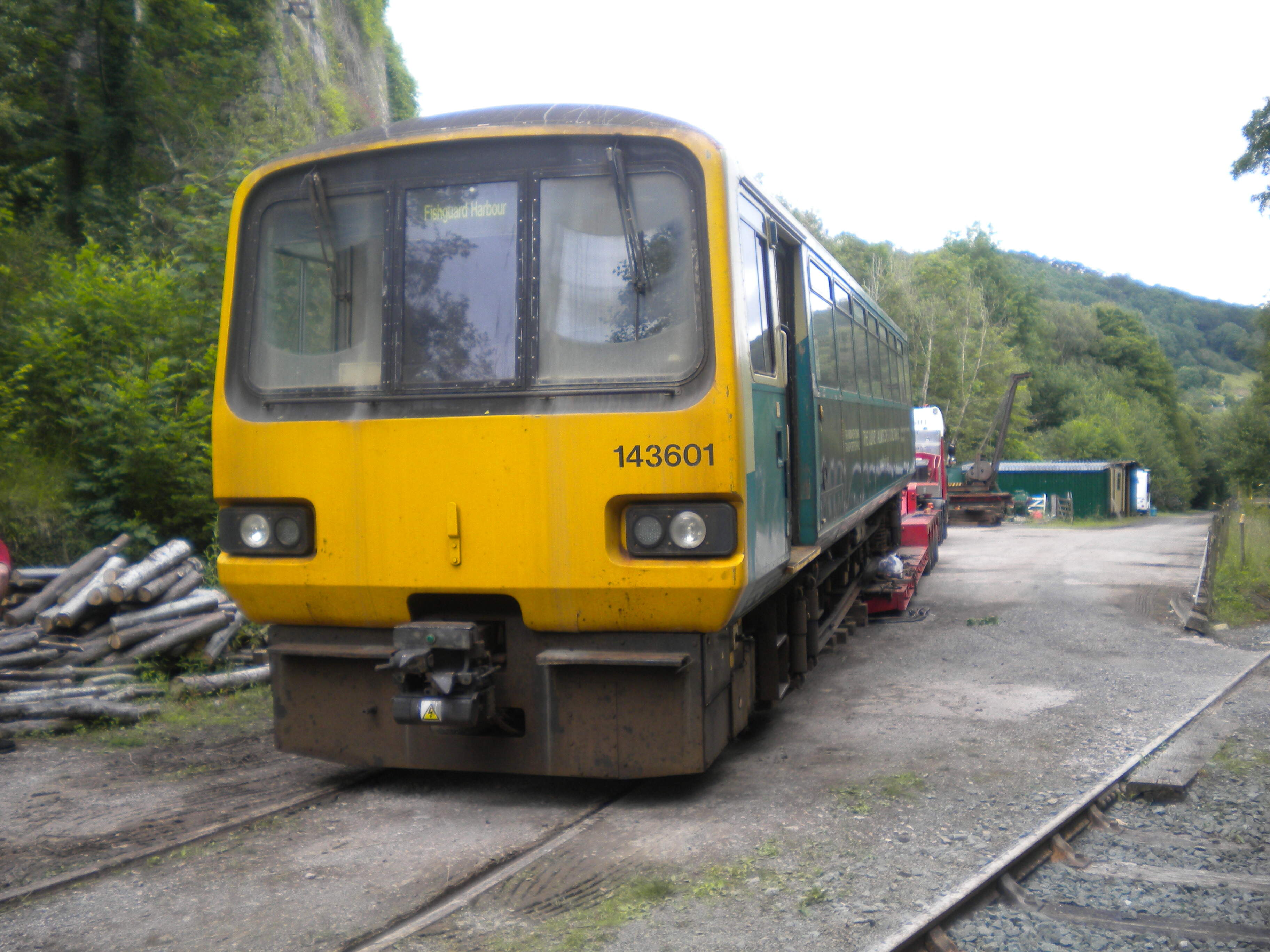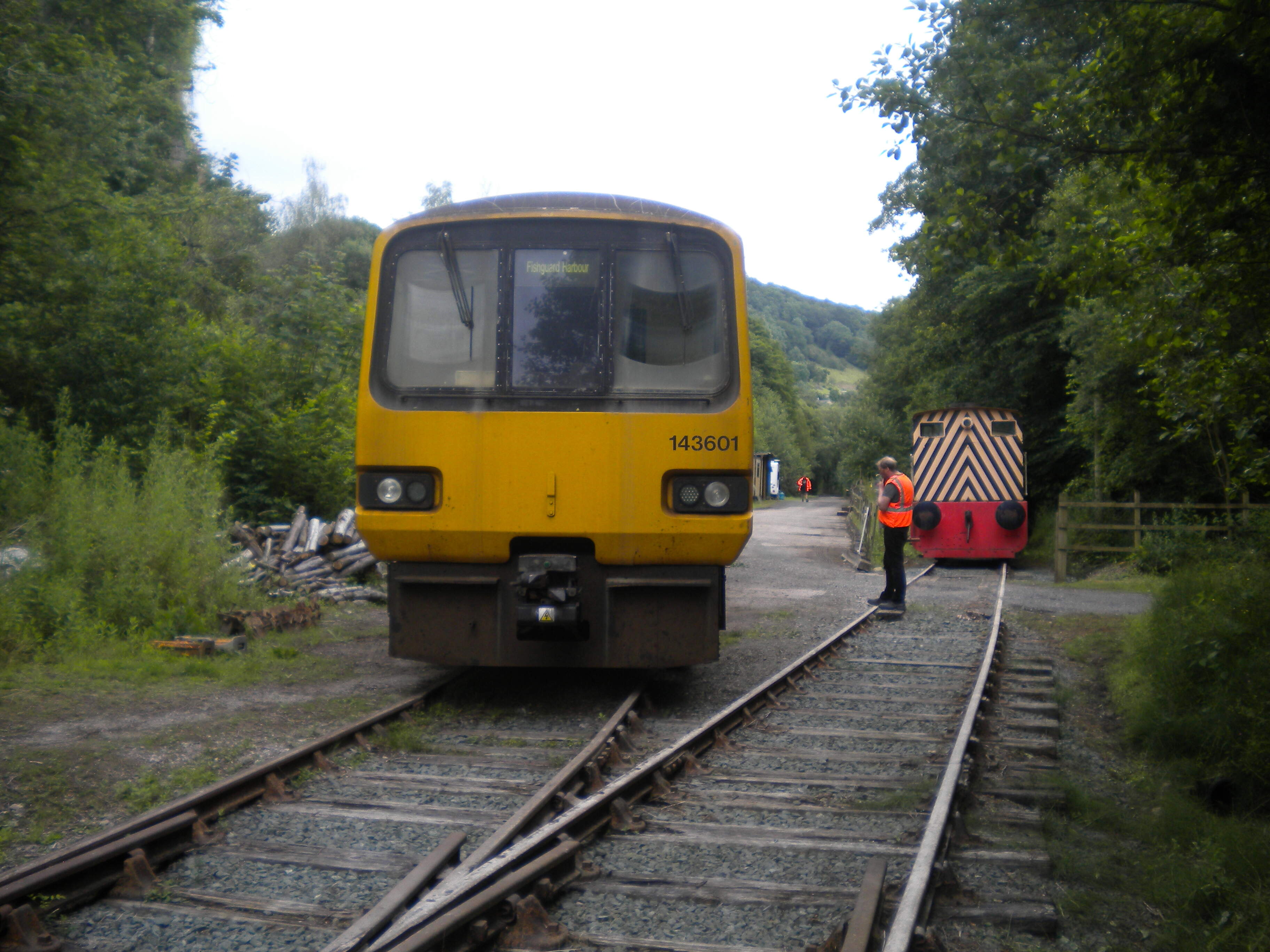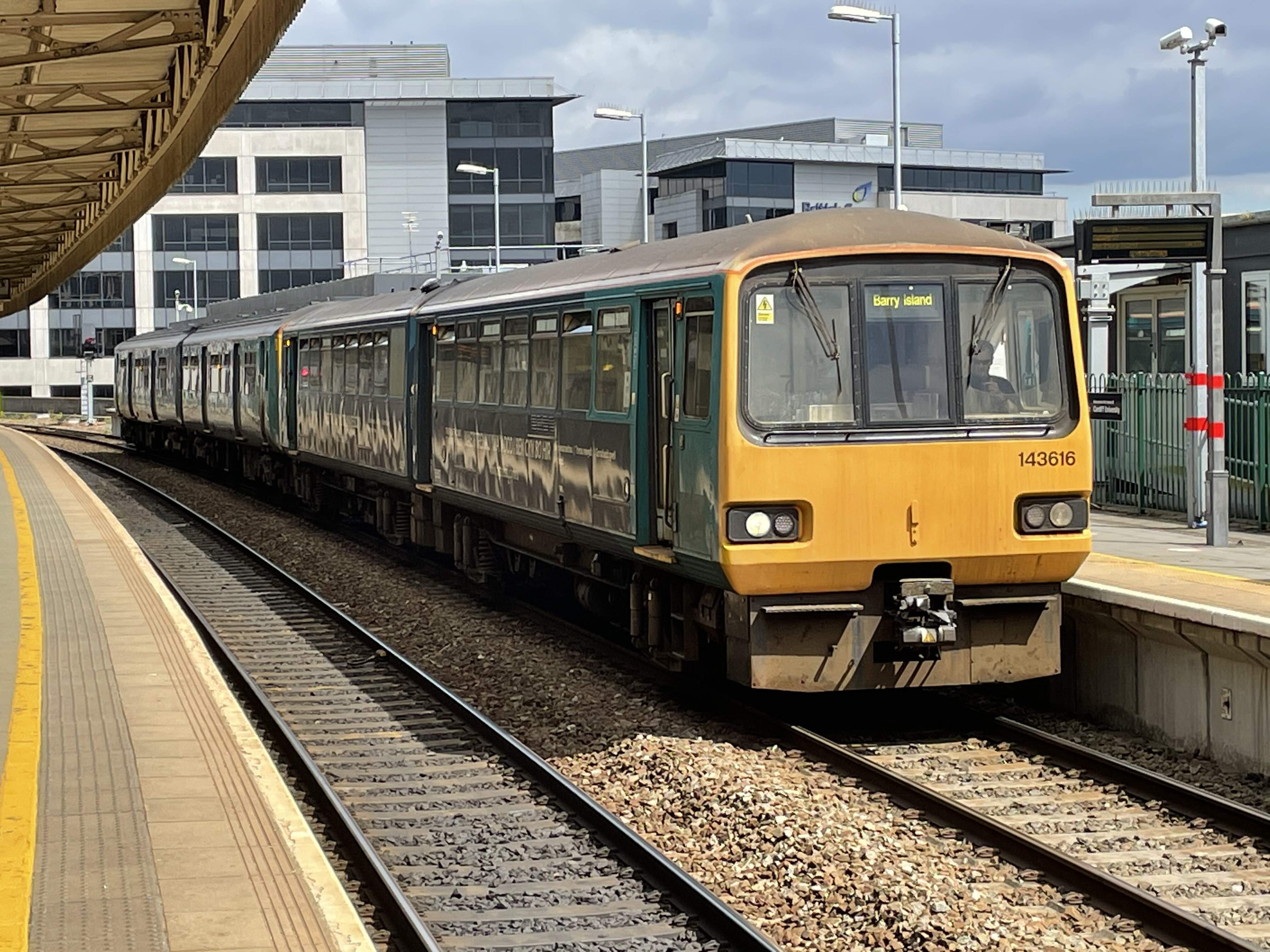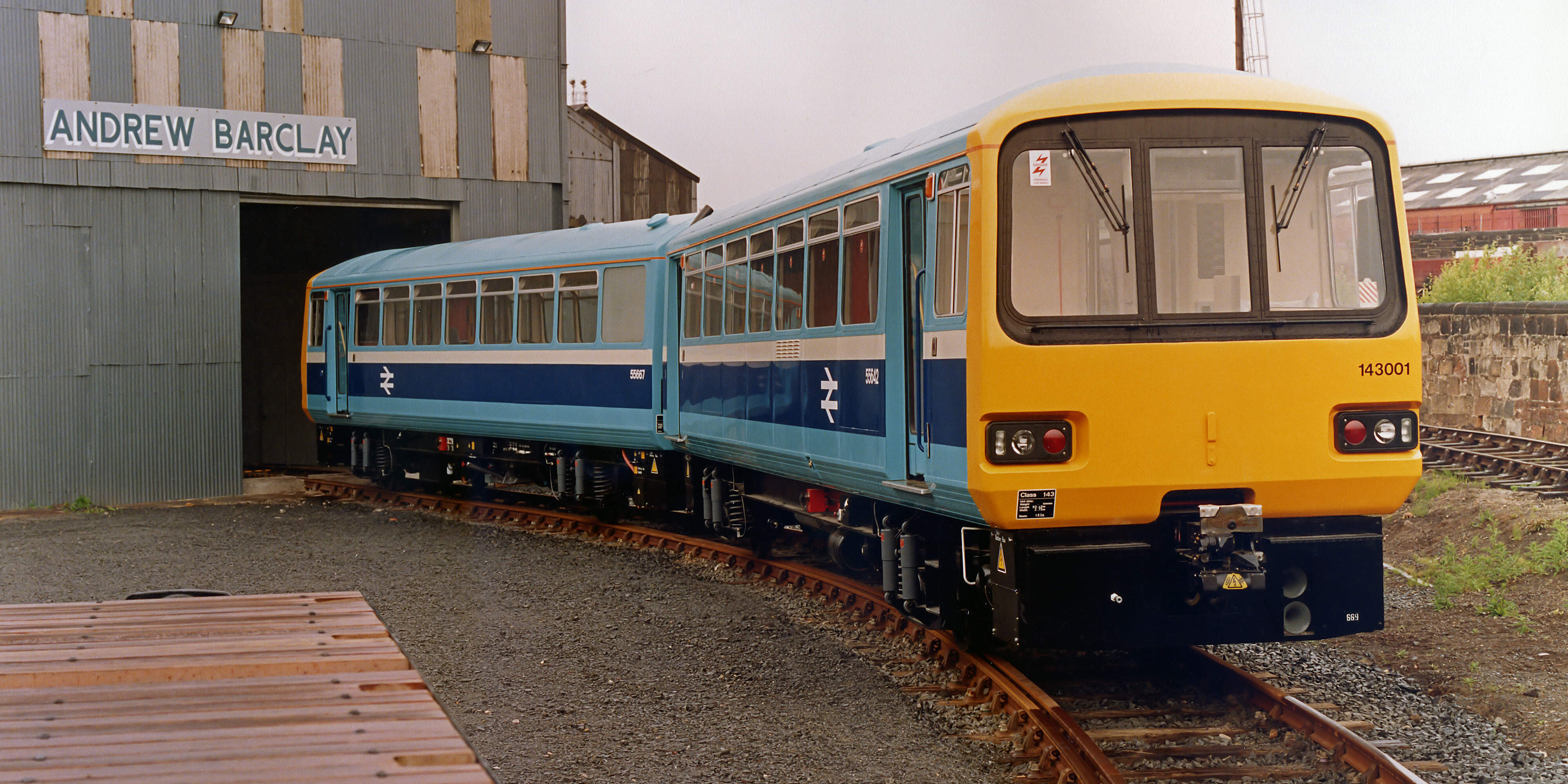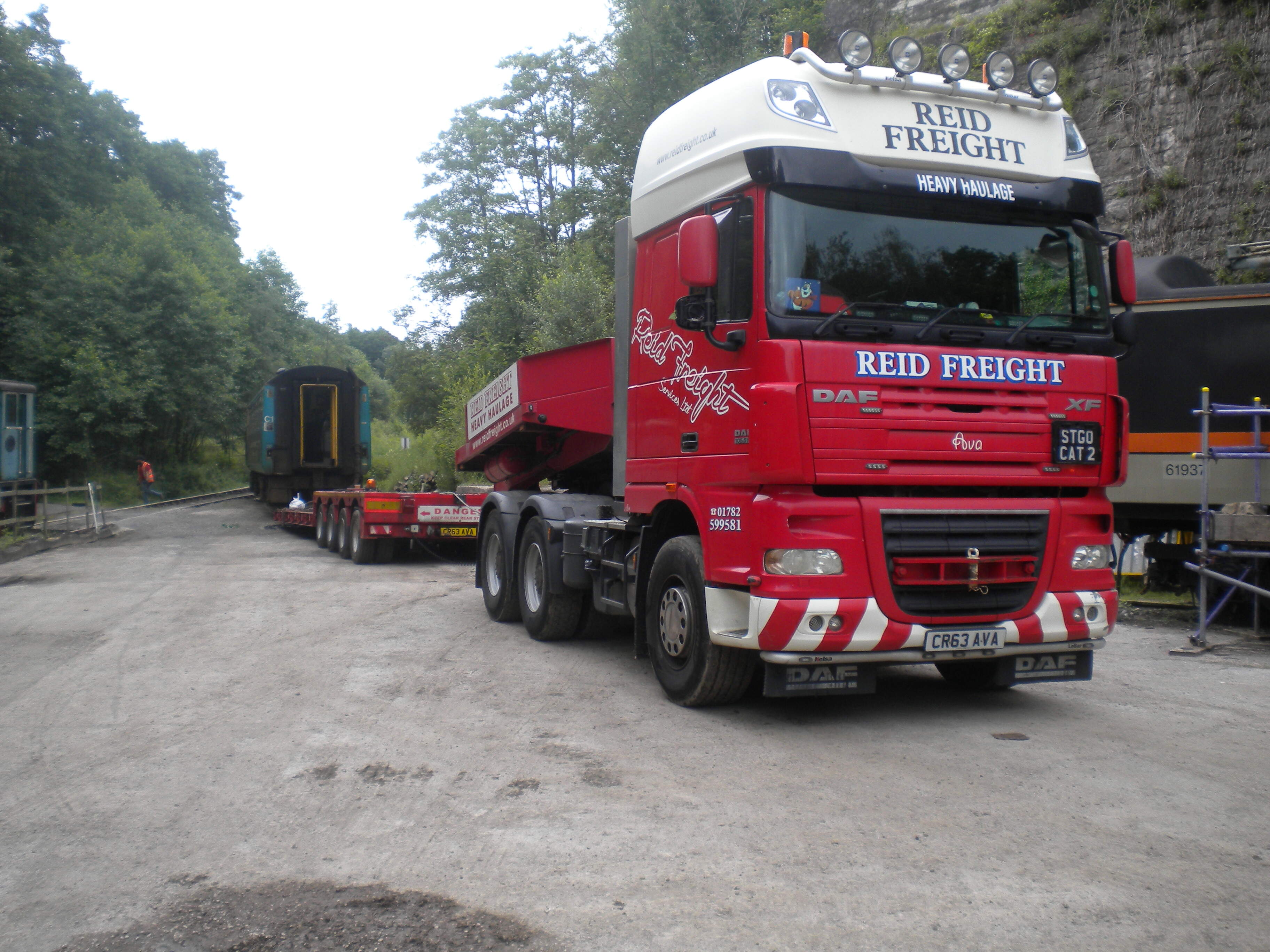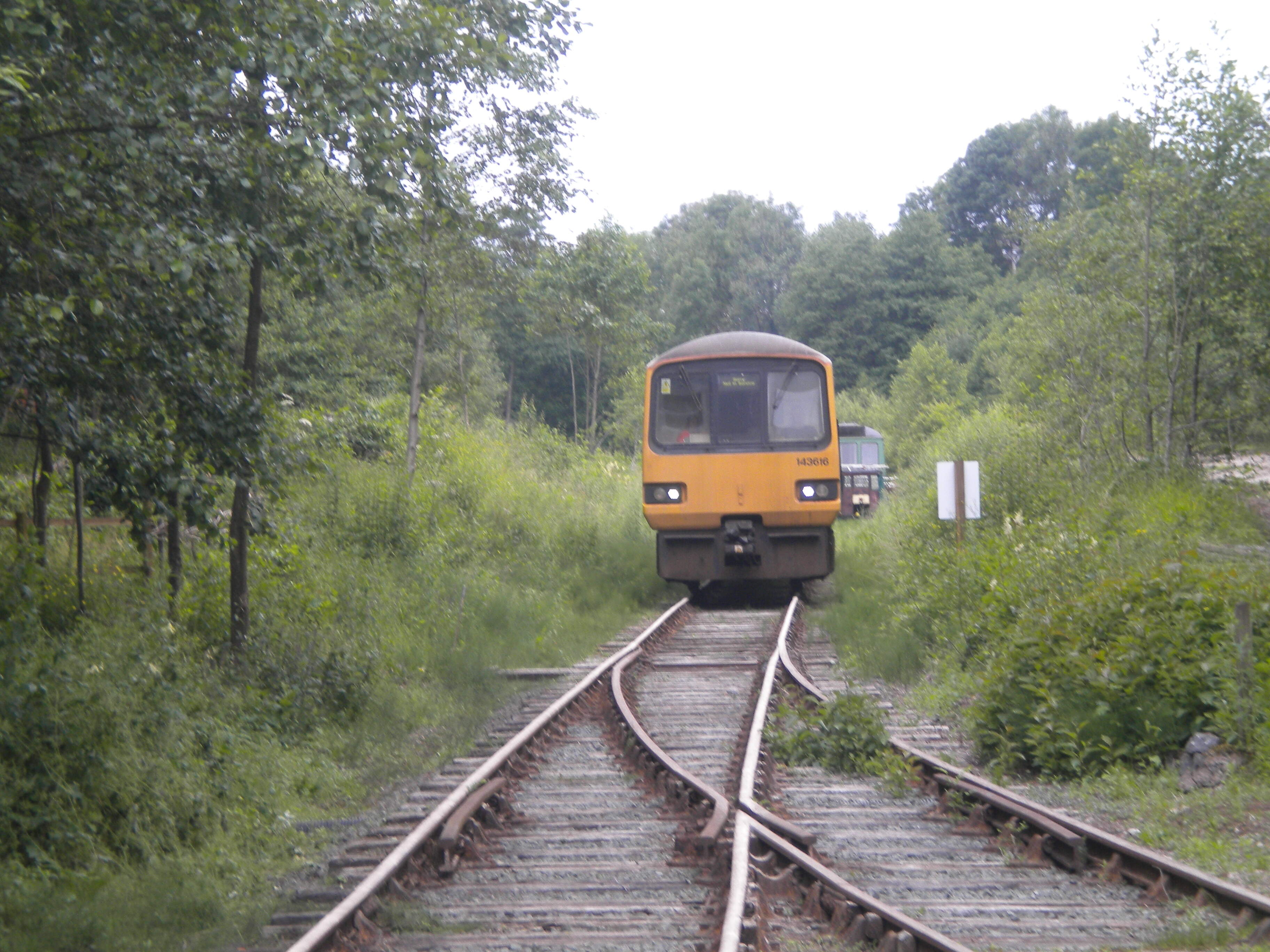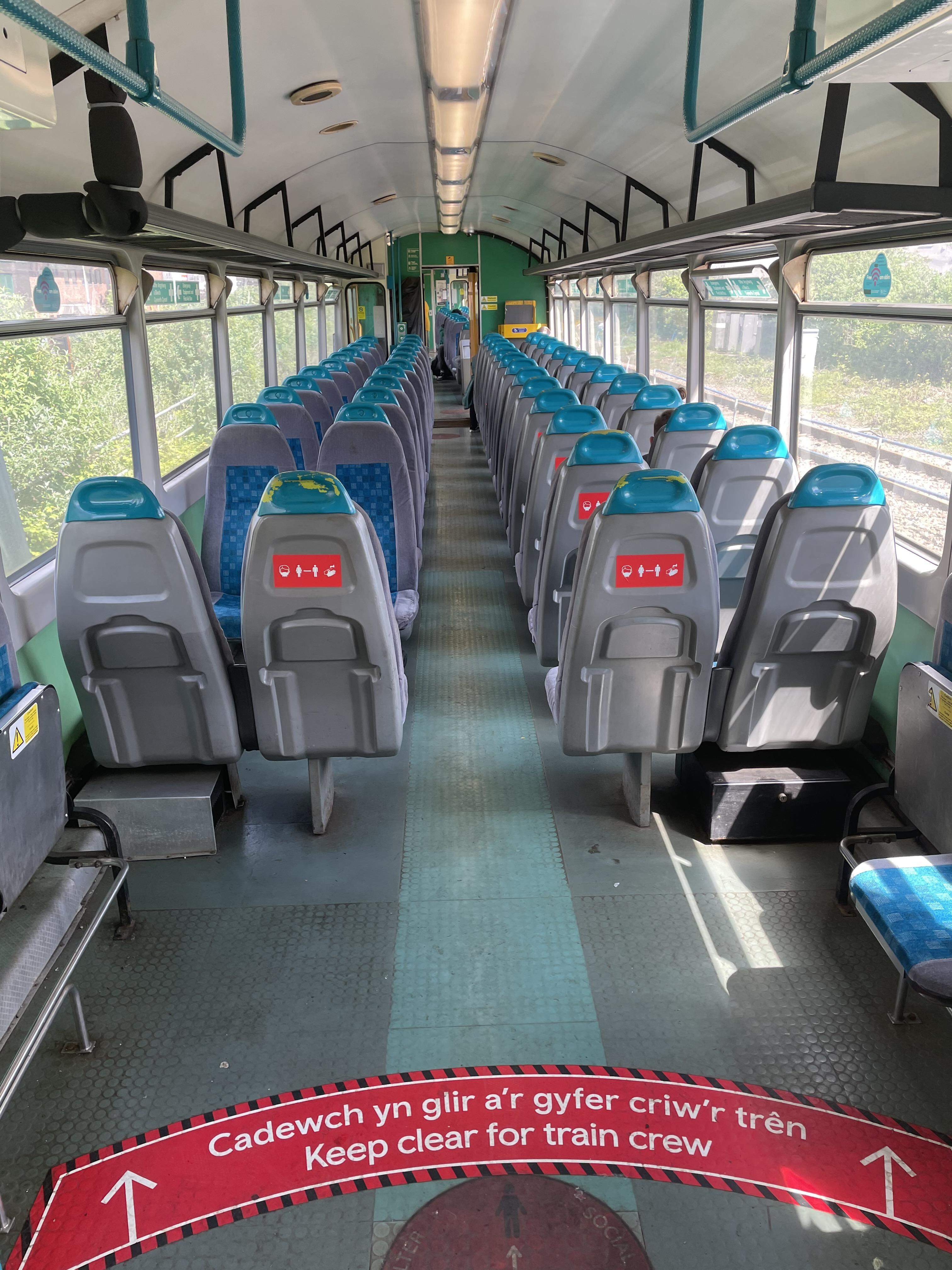THE PACERS ARE COMING!
by Graeme Gleaves
The Tanat Valley Light Railway has purchased two class 143 'Pacer' DMUs that will be used as passenger stock when the line opens for such traffic. Some of you may be wondering what on earth a Pacer is, so here is a potted history.
Pacers are diesel multiple units (DMUs) which means they are passenger carriages with cabs at one end of each of the two coaches that makes up a unit, under the floor each coach has a six cylinder Cummins diesel engine which drives the inner wheelset through a torque converter and final drive gearbox, the sets can be coupled together and operated by one driver. Introduced at a time when the railway industry was going through a period of uncertainty and underfunding the concept was to produce a fleet of 'Railbuses' that would be planned to be in service for 15-20 years and hold the fort until the railway industry was in a better position to provide something more long term.
The key feature of these trains is that each carriage is on a four wheel chassis with the inner axle (the non driving cab end) powered and the driving cab end axle unpowered. These trains have divided opinion since the first examples were built in 1984. The design was a low cost solution to the need to replace diesel units dating from the 1950s on rural and suburban lines and was born as a joint project between British Rail Engineering Limited (BREL) and Leyland Buses, the former providing the chassis and rail specialist equipment, with the latter providing the bodywork and engines. There were a series of prototype test vehicles built between 1978 and 1984 with a body based upon the Leyland National bus bolted to a chassis based upon a four wheeled high speed freight vehicle, driven by a Leyland bus engine. The fruits of this research was the first batch of Pacer units, the Class 141s, 20 of which were built for use in the Leeds area, they were joined in 1985 by the next model, the class 142 of which 96 two car units were built. These worked around Lancashire and Merseyside with a batch going to Devon and Cornwall, where they became known as Skippers, but the rigid wheelbase did not fit well on the West Country branches and the units were relocated to Yorkshire after only a few years. Both the 141s and 142s were built jointly by BREL and Leyland; both nationalised industries, but the railway industry was being opened up to private companies bidding to build stock and it was such an arrangement that was responsible for the next batches of Pacers.
The Class 143s were a fleet of 25 two car units built during 1985 and 1986. The bodies had a far more modern look than the Leyland ones and were built by Scottish bus builder, Walter Alexander at their Falkirk plant which were then transported to the Kilmarnock works of Andrew Barclay (later known as Hunslet-Barclay) where they were placed on the four wheel chassis built by that company. The two cars had only one major difference between them with one car having a toilet. Folding bus type doors are fitted either side of each end behind the cabs with a single set fitted on one end of each car giving a total of three sets of passenger doors on side of the two car unit. Each car had a Leyland TL11 engine and a self changing gearbox for the driven axle. The first completed unit rolled out of Kilmarnock painted in the then new British Rail 'Provincial' livery of all over pale be with a white stripe below the window line on each bodyside and a thicker dark blue stripe below that. Cab ends were standard warning panel yellow with the coach numbers and the BR arrows logo in white on the dark blue stripe. The six figure unit number was on the front in black below the driver's window. They were numbered 143 001 – 143 025. The last six of the class 143 020 – 143 025 were sponsored by the Tyne Passenger Transport Executive so they were painted in a livery very similar to the Tyne & Wear Metro cars with the lower bodyside in yellow and the upper bodyside in white, a mid blue stripe separated the two but the yellow cab ends were the same as the blue units. Like all Pacers the seats fitted from new were basic bench seats of the types fitted to buses. The whole fleet was delivered to Heaton depot in Newcastle and they were put to work on services from Newcastle to Sunderland, Hexham and Carlisle. There was one more class of Pacers built during 1986 and 1987 classified as the Class 144s. These also had Walter Alexander bodies and looked identical to the Class 143s, the difference was the chassis which was built by BREL. There were 23 of the 144s built with the final ten sets being three car units with a non driving car marshalled in the middle, these were built after all units had been completed as two cars and were added later. Al of the 144s went to work in Yorkshire.
Pacers of all types suffered initial teething problems. The four wheel chassis had a rigid wheelbase and was not best suited to curvature on some country branch lines and gave a rough ride on some lines that had jointed track, but the 143s and 144s had an improved suspension and were not as rough as the earlier designs, but the bench seats could not have helped with passenger comfort. The engines and gearboxes on all types were problematic and it was not uncommon for a loco and coaches to be often called in to cover for a failed Pacer. From 1989 the whole fleet of Pacers, with the exception of the class 141s, had new engines, a Cummins L10 six cylinder unit, along with new final drives made by Voith installed. This had a dramatic positive effect on reliability. Initially the Tyne & Wear batch of 143s were not to be modified so they were renumbered so they could easily be identified as such, this was done by changing the fourth digit of the unit number from a zero to a three so these units became 143 320 – 143 325. Just to confuse matters the other 143s that had received new engines and final drives were renumbered by having the fourth digit changed from a zero to a six so they became 143 601 – 143 619. In due course the Tyne & Wear units were modified and were renumbered again to become 143 620- 143 625. By the time this was completed it was decided to relocate all 25 units to the West Country and South Wales and this took place during 1991 and 1992 with the whole fleet being based at Cardiff Canton Depot. They settled into use on the Valley Lines around Cardiff to Treherbert, Merthyr Tydfil, Bridgend via the Vale of Glamorgan, Barry Island and Aberdare. On occasions they went further afield to Pembroke Dock, Carmarthen and Fishguard Harbour. They also worked the Bristol area reaching Taunton, Severn Beach and Gloucester. A change of livery coincided with the relocation when the whole fleet gained Regional Railways livery with a rich blue on the upper bodyside with light grey on the lower body with a light blue and white stripe separating the two below the window line. The full yellow ends remained with black around the cab windows.
Privatisation saw the units first come under the Wales & West franchise which gave way to Wessex Trains in 2001. In 2006 The fleet were split between two franchise operators due to a re-organisation. Fifteen units went to Arriva Trains Wales and the remainder went to First Great Western. The FGW units were allocated to Bristol St Phillips Marsh Depot and worked routes not only in the Bristol area but started to reach Exeter and the Devon Branches to Exmouth, Barnstaple and along the sea wall to Newton Abbot. This was only eight units as two 143s had become casualties to accidents and were scrapped in 2004 and 2005 respectively. Thus the 143 fleet remained more or less this way apart from the GWR units being used exclusively on Devon branches out of Exeter and the Wales ones sticking to the South Wales Valley lines out of Cardiff. Changes of liveries came and went during privatisation and the 143s lost the infamous bench seats during a heavy refurbishment that saw far more comfortable full size seating installed.
A change in legislation requiring passenger trains to have certain levels of accessibility for persons of restricted mobility became law in 2008. This gave the main line operators until January 1st 2020 to make changes to their fleets so they complied with the new regulations. The Pacer fleet had no universal access toilet and the step up from the doorways into the passenger saloon was another area they failed to meet the standard. The industry had two choices, either a full rebuild of the fleet or replace them. A single two car 144 unit was rebuilt as a demonstrator to show how a Pacer could be redesigned to be compliant but as the type had already exceeded its intended design life the decision was taken to phase all Pacer units out ahead of the deadline. The delivery of replacement stock took time and both GWR and Transport for Wales were given extensions to operate their fleets into 2020. GWR ceased Pacer operation in December 2020 but TfW were having teething problems with their new stock and obtained a further extension up until the end of May 2021. This was the last such extension and the Pacers, despite being designed as a 15-20 year stop gap came to and end having clocked up 37 years of front line operations. The 143s were the last type to operate and they had achieved over 35 years of service.
